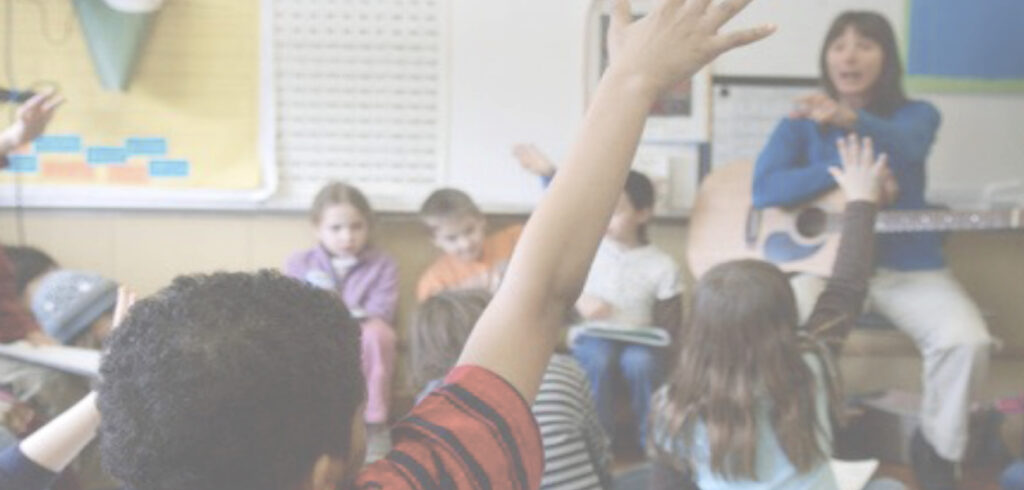School Climate
School climate is the experience you have when you are in a school – that feeling you have – safe or unsafe, connected or isolated, the way you know if the school is welcoming for you and your family. Feeling safe, connected, and welcomed starts with relationships that extend well beyond the brick and mortar of a school building and include our connections, partnerships, and the conditions for learning. Both measuring and strengthening school climate, in person or virtually, can impact students’ academic, social, behavioral, and physical outcomes.
School climate matters.
How students, staff and families feel about their school’s climate and how connected they are to adults and peers impacts students’ motivation to learn and the ability of school staff to create positive conditions needed for learning.
It is even more important now for students and staff to create a positive school climate and for school staff to understand their strengths and challenges with family partnerships, peer climate, and students’ connectedness to caring adults.
Research consistently shows that student and staff perceptions of their school’s climate are linked to increased student academic achievement, graduation rates, social and emotional outcomes, staff job satisfaction, staff attrition, decreased student risk behaviors, school absences, and school violence.
“We use SCCS to look at and focus on our needs.”
-District Superintendent
How can AASB help my school climate efforts?
School Climate & Connectedness Survey (SCCS) – AASB offers Alaskan schools surveys for their students, staff and families each spring to measure:
- How students, staff and families view school climate.
- How connected students feel to adults and their peers.
- How connected staff feel to their peers and students.
- Social and emotional learning (SEL) skills.
- Observed risk behaviors at school and school events.
- Cultural Connectedness (cultural identity, cultural responsiveness/sensitivity, and instructional equity).
- Staff perceptions of Trauma-Informed Schools.
- How school climate is experienced by different sub-groups, such as race/ethnicity, gender, and grade level.
- Data trends over time.
SCCS’s interactive survey platform makes survey administration, reporting, and analysis interactive and user-friendly. Participating districts have access to webinars and ongoing training support for the oversight of survey administration, as well as how to use the interactive platform and results to make data-informed decisions.
2023 Alaska Participation in SCCS
.

Access Alaska’s Statewide Results here: Alaska Statewide Link
The School Climate & Connectedness Survey was developed by AASB and the American Institutes for Research (AIR).
“SCCS leads to some really big conversations.”
-Alaska School District Teacher
AASB School Climate-Building Partnerships
AASB staff work with youth leaders, school boards, and staff in an ongoing capacity as coaches to support, enhance, and measure school climate-building strategies. Together, we design a tailored approach to support family partnerships, staff team-building, youth leadership, school safety, or other priority areas within the school climate survey.
To find out more about AASB’s school climate services, email our School Climate Team.

What does school climate work look like in practice?
The school climate and connectedness survey is a useful tool for understanding how to better support, engage and build important relationships with their students and families.
One Alaskan school district team looked at their students’ responses and saw 40% of their students said they would not be missed if they were absent from school. That sparked a discussion among school staff. The first part of the discussion was disbelief by many school staff. “There must be something wrong with the data.” “How could students actually believe that we did not care if they showed up to school?” Conversations with students confirmed that many students felt very alone – hard to understand with so many dedicated teachers in the school.
The team decided they needed to develop strategies to change this perception. They made a list to be sure every student had two key staff members with whom they already had a relationship. When coming up with this list, the staff realized there were students who did not have a strong relationship with any staff, and these students became a priority. Specific staff would greet them every day and make sure they had one non-directive, positive conversation(s) with a school adult. Key school staff would explicitly say to students, “We missed you yesterday when you were gone, and we are glad you are here today.”
The school introduced other school-wide strategies to build relationships and improve climate. Working together, school staff were able to change the (is) perception of students and reaffirm their commitment to relationship-building.
“Positive school climate and connectedness is not a program but a way of engaging in the world.
How do we make this the foundation of all of our interactions?”
-Alaska School Counselor
How do we get started?
- Assess the current school climate. More than 30 school districts in Alaska use AASB’s School Climate and Connectedness Survey (Alaska Statewide SCCS) and other survey tools to understand key aspects of school climate for staff, students, and families.
- Develop key systems and approaches. Incorporate trauma-informed or restorative discipline practices or consider multi-tiered systems for social, emotional, and cultural well-being.
- Take stock of the physical space. Safe schools are a primary factor for good attendance and are strongly correlated to student academic outcomes. Scan your building and classrooms for opportunities to create safe spaces.
- Bring together stakeholders. Invite families, Elders, tribes, support services, youth, and school staff to create a shared vision and goals for improving school climate and connectedness.
- Co-create a map for reaching your goals. Engage youth, families, school staff, and community partners to achieve clear climate goals in ways that align with community values and practices.
- Celebrate successes. School climate is never just a one-and-done, but if you worked on your school climate goals and had some successes, celebrate online, in-person, and at community events.
- Share your resources. AASB has a platform, the Alaska Playbook, to share strategies to build and improve school climate. This is available through AASB’s School Climate & Connectedness Survey Platform.
A note on equity and school climate
A positive school climate equals an equitable school climate. As David Hutchinson, past president of the Pennsylvania School Boards Association, stated, “You can’t have equity without attention to climate, and you can’t have a good school climate without attention to equity.”
Creating Equitable School Climates
- Educators should educate themselves to understand how demographics such as socio-economic status, race/ethnicity, gender, or ability levels impact stakeholder perceptions of school climate.
- How can your district improve response rates from all stakeholders and diverse groups?
- What can you do to make school a welcoming and safe place for all students?
- How can you ensure that all students have high expectations for their learning?
- What can you do to ensure that all students have a caring adult at school?
Resources
- Let’s Talk About School Climate (March 2020, Alaska Education Echo Network), Presenter: Jenni Lefing, AASB
- Alaska Playbook – For each SCCS topic, we are putting together strategies, resources, and ideas from school staff, community members, and other stakeholders in Alaska to help stakeholders identify and carry out the next steps on their road to improving school climate.
- schoolsafety.gov – Provides support to school districts in creating a school safety plan. Resources on school climate, mental health, physical environment, bullying & cyberbullying, threat assessment, school security and more.
- School Climate Guide for District Policymakers and Education Leaders

